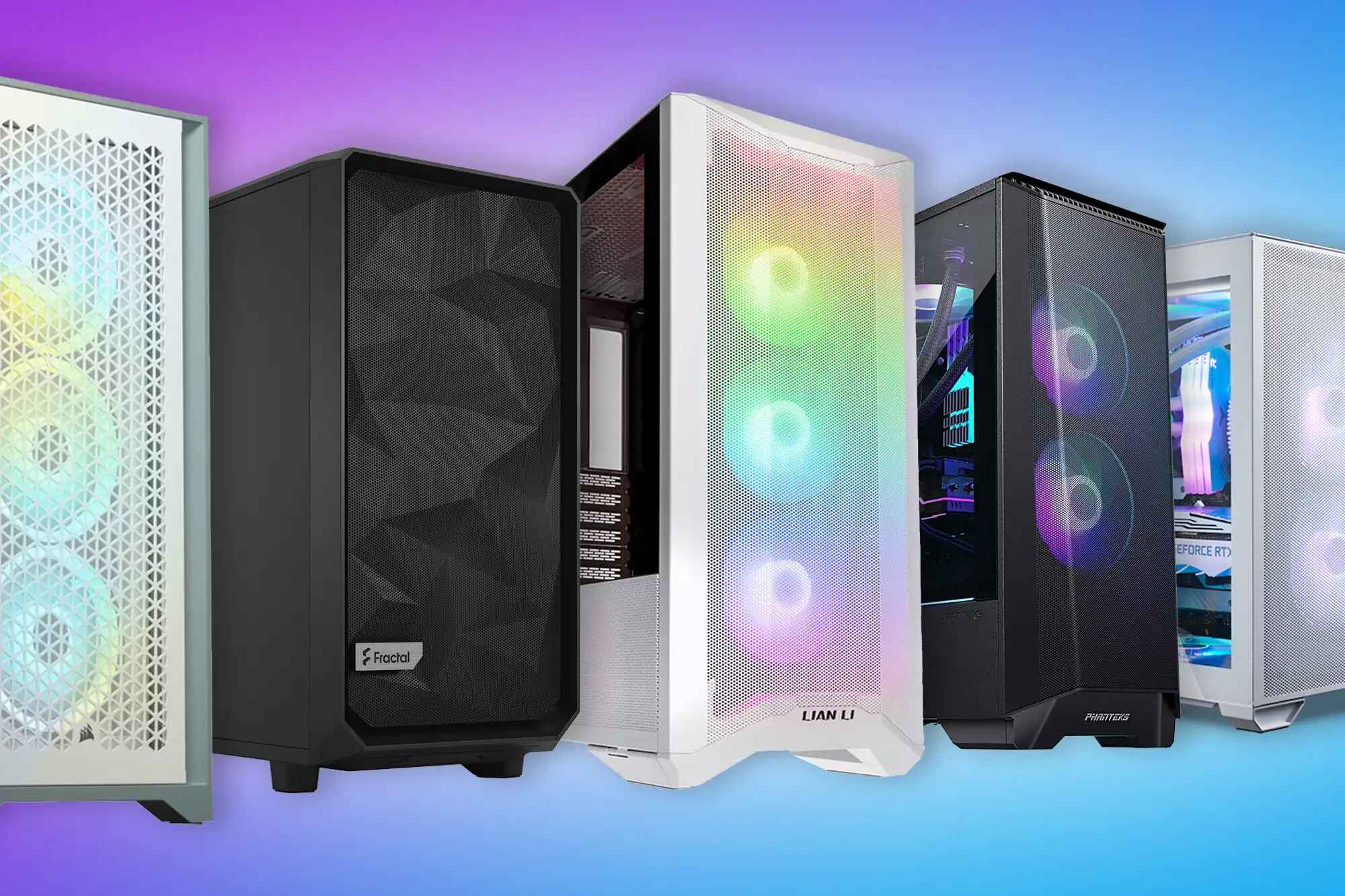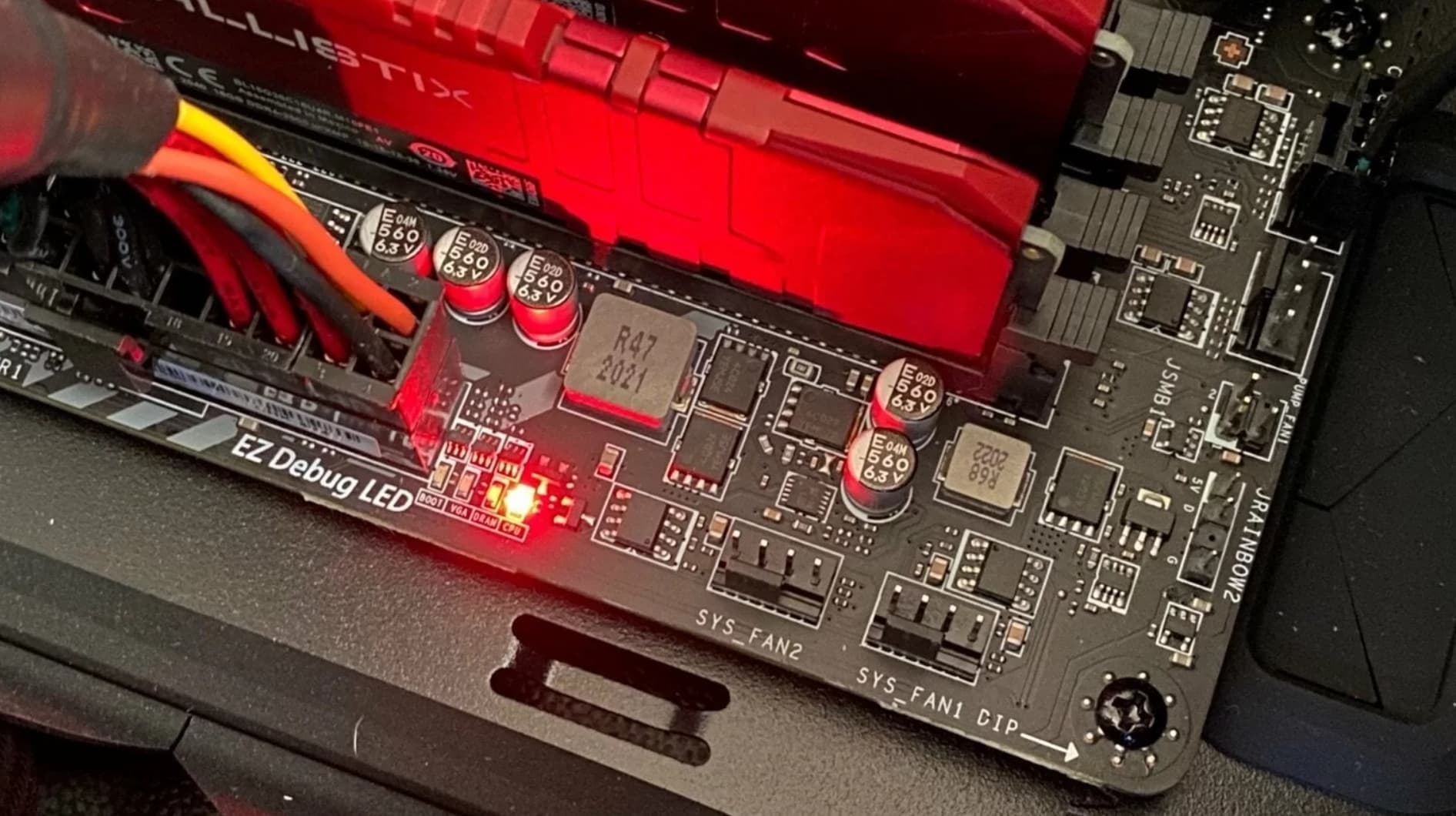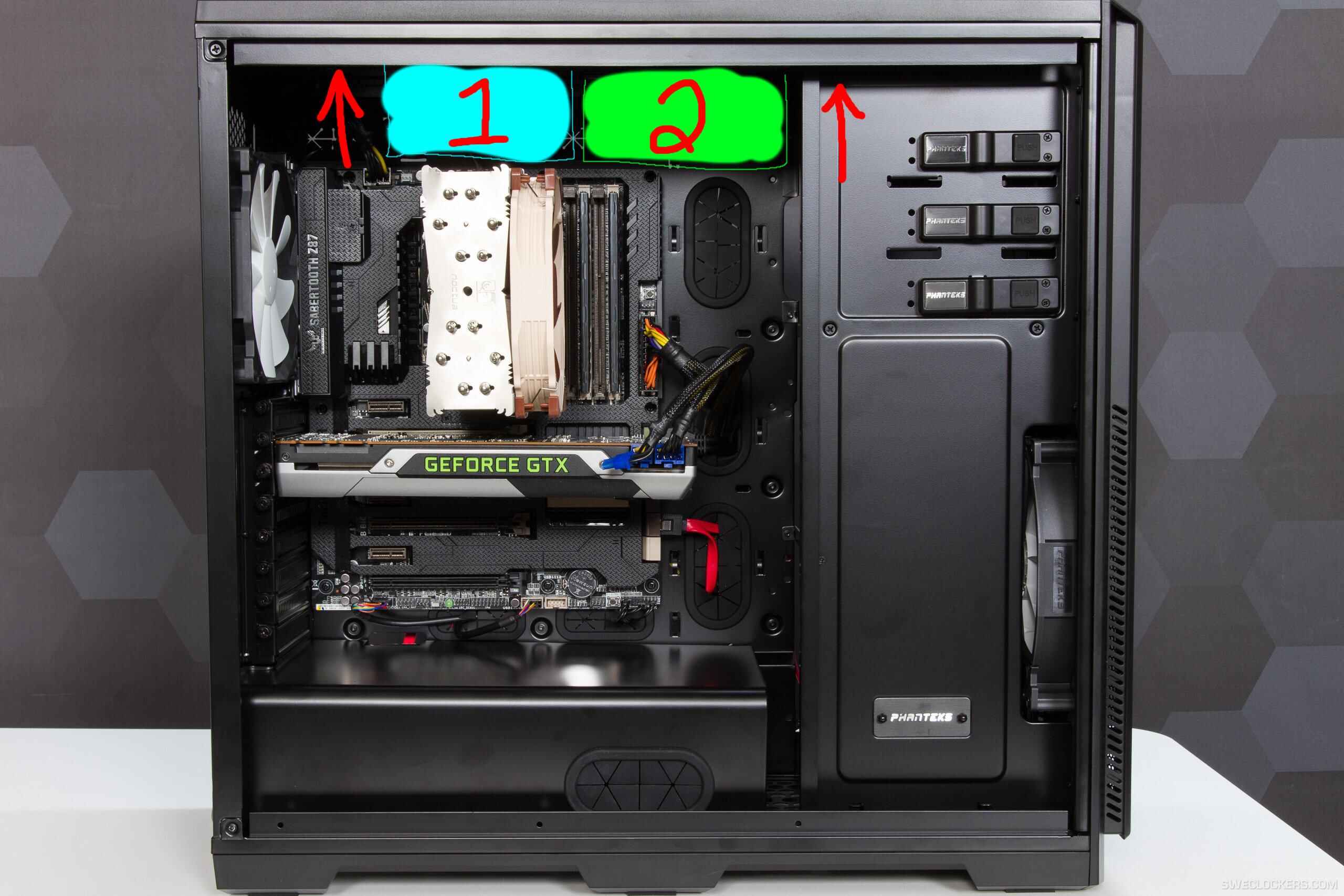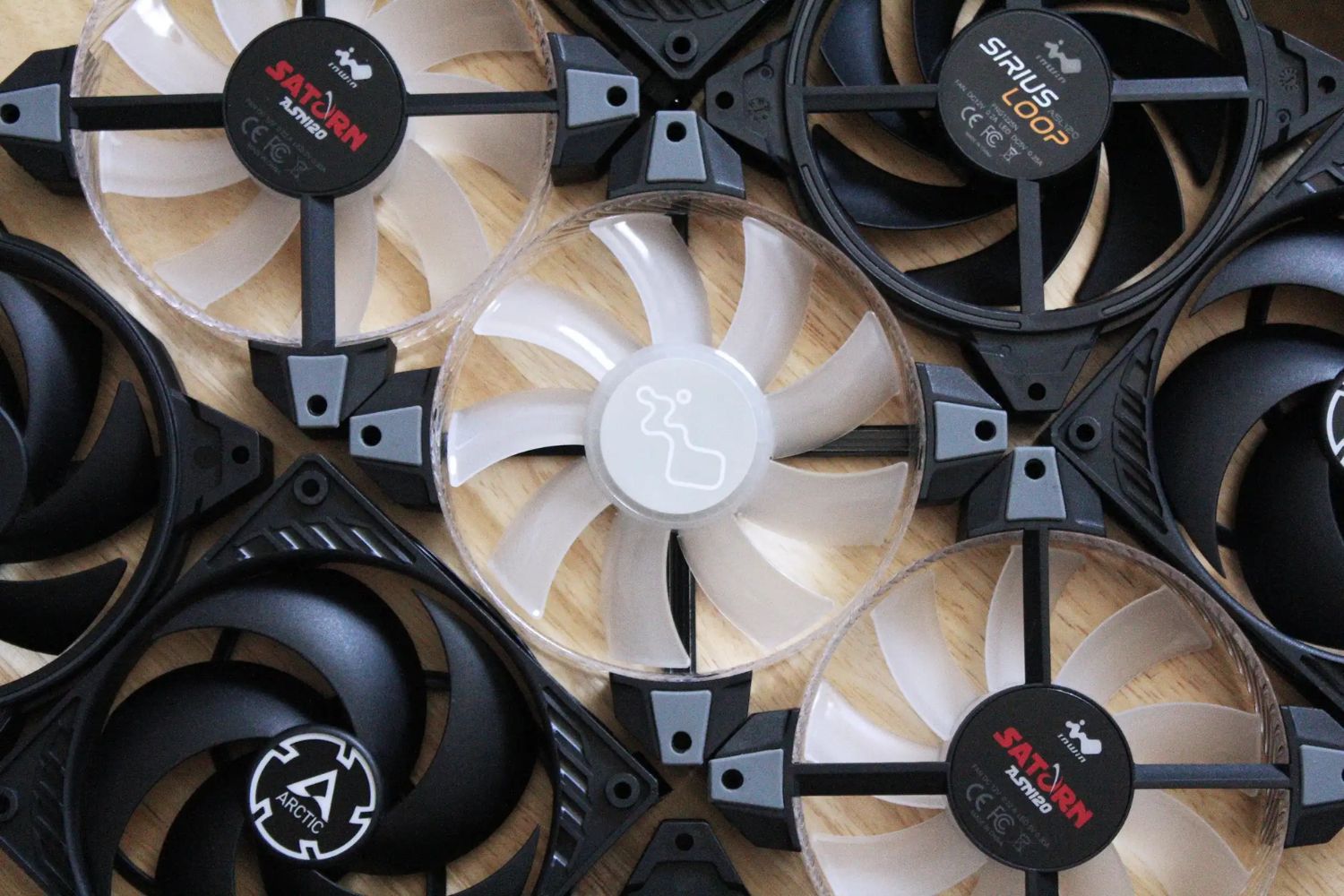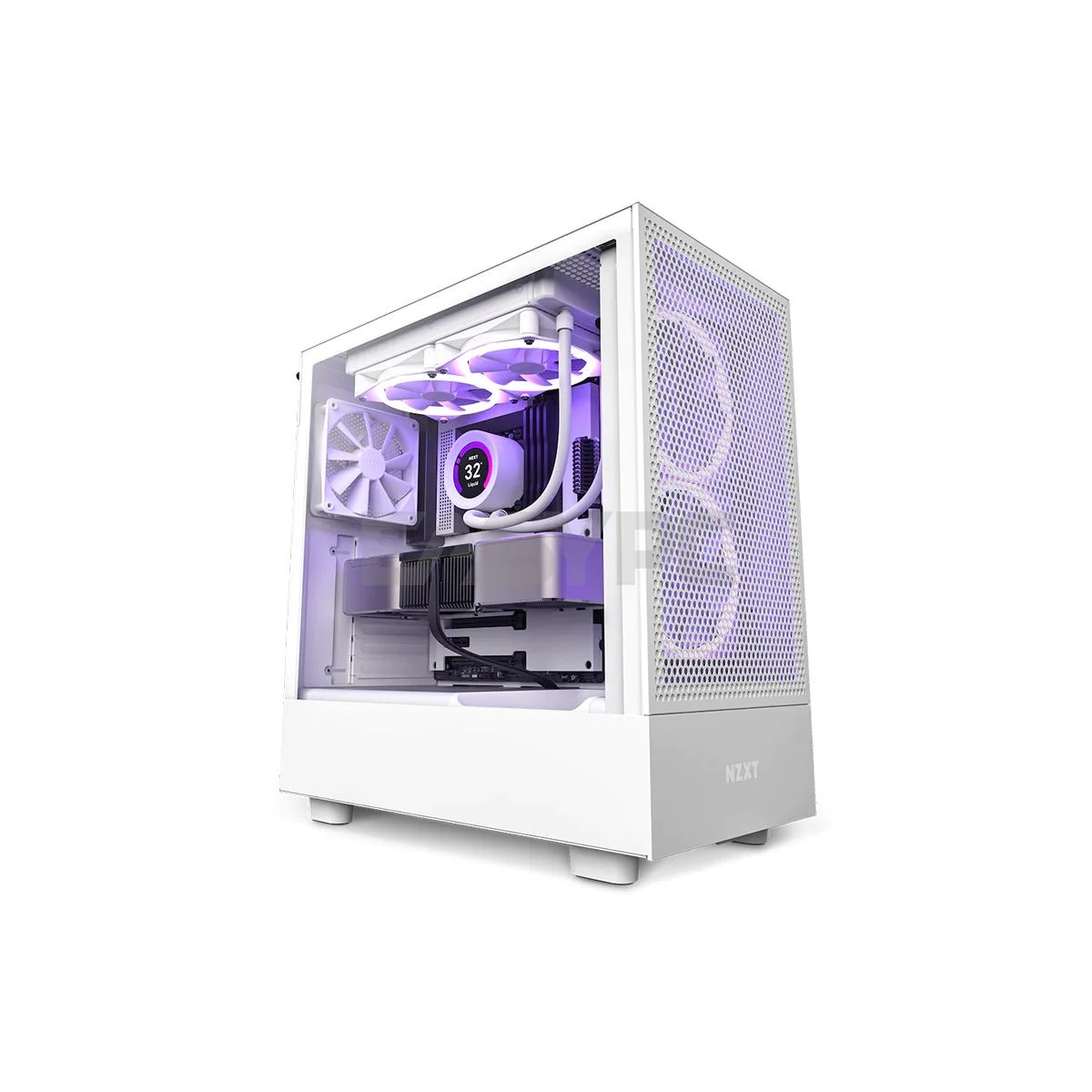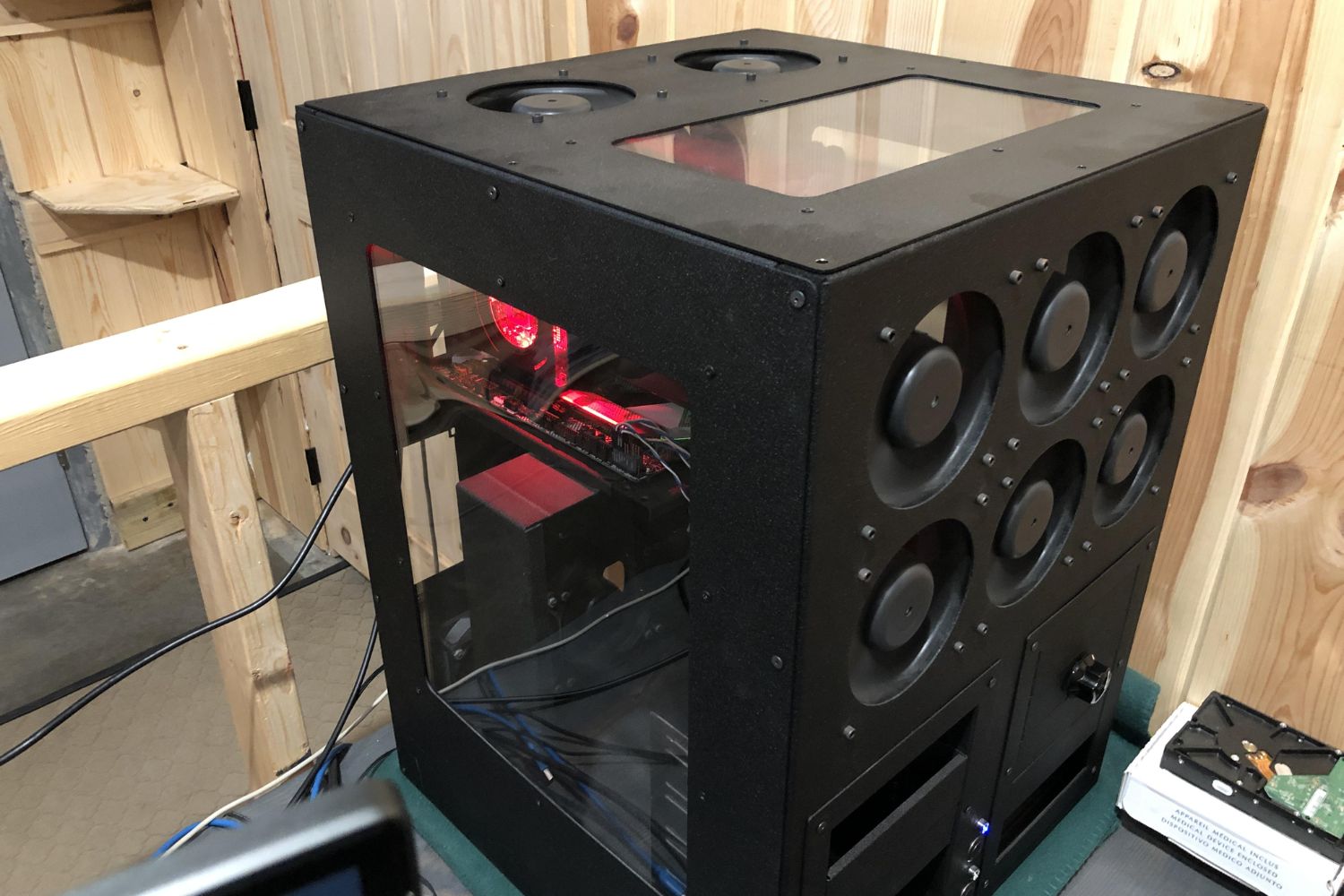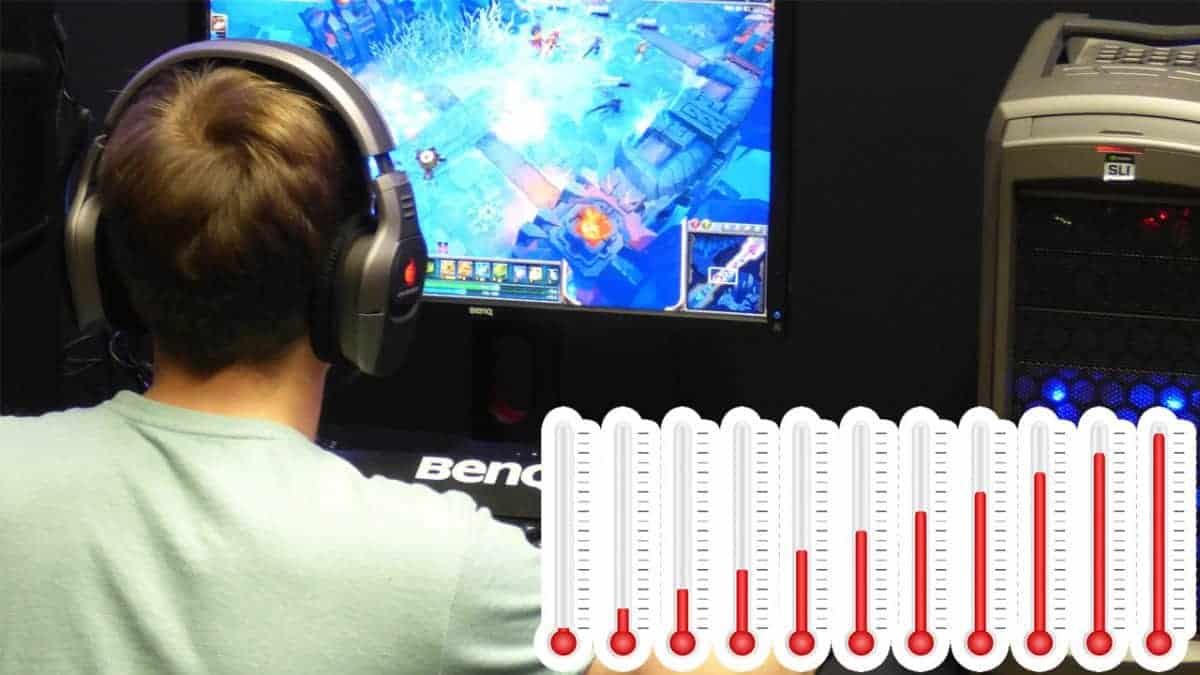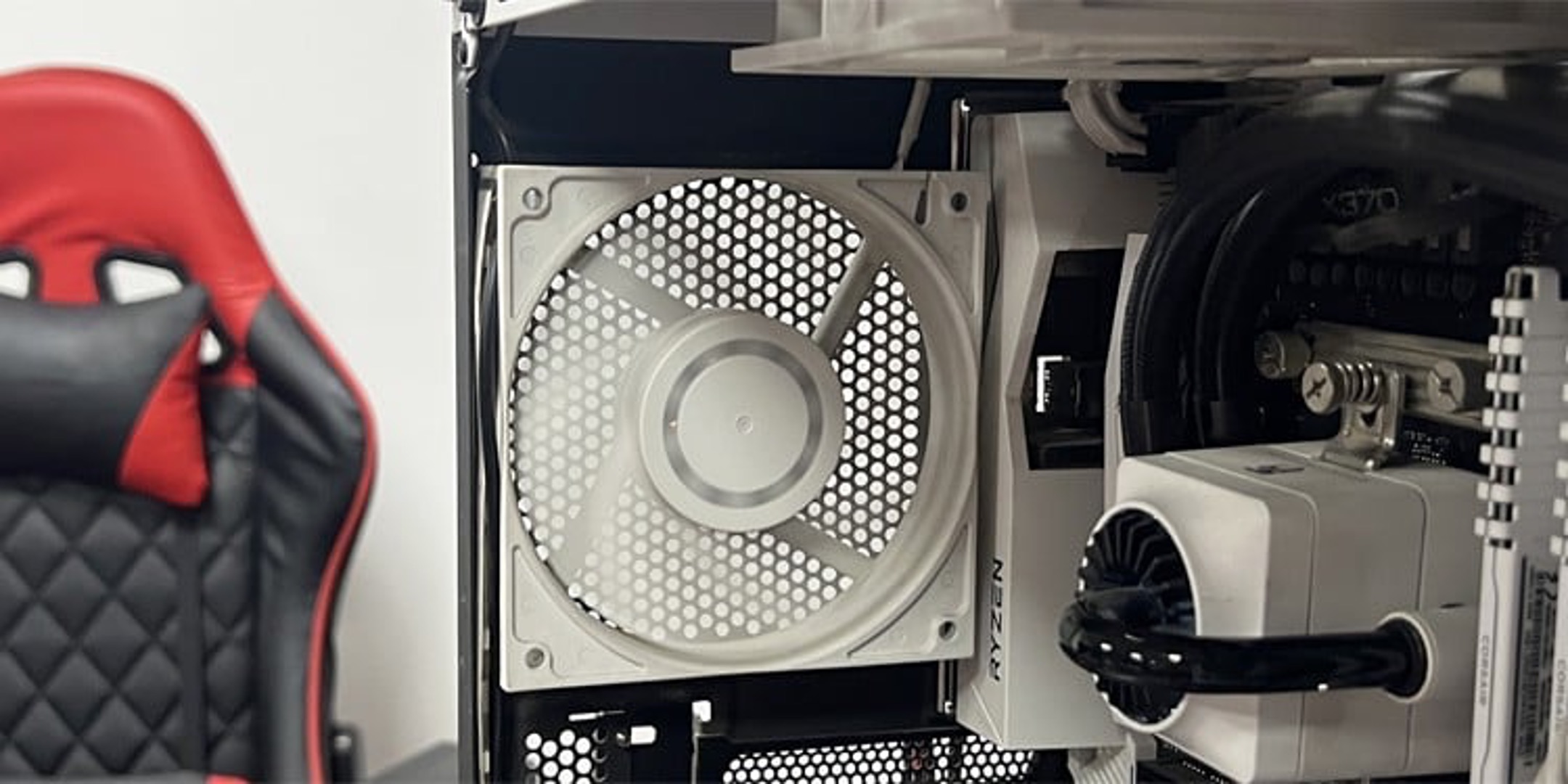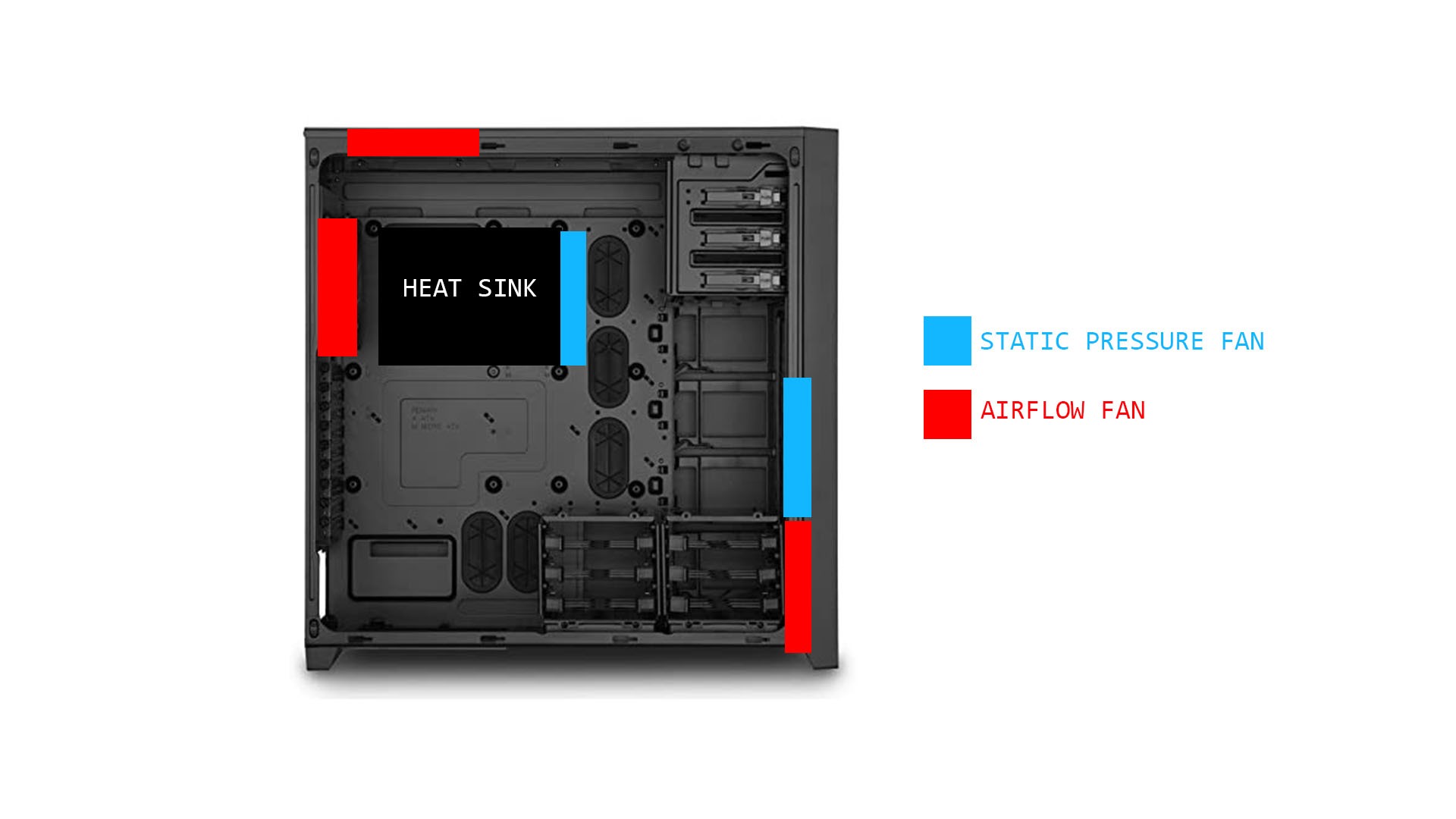Introduction
When it comes to keeping your computer running smoothly and efficiently, maintaining optimal temperatures inside the PC case is crucial. Overheating can lead to decreased performance, system crashes, and even long-term damage to your hardware. Therefore, it is essential to understand what temperatures should be maintained inside the PC case and how to achieve them.
All components inside a computer generate heat as they work, and it is the job of the cooling system to dissipate this heat and keep everything within safe operating temperatures. Each component, such as the CPU, GPU, and hard drive, has its own ideal temperature range for optimum performance and longevity. Deviating from these temperature ranges can result in reduced performance, shortened lifespan, and potential component failure.
How can you know what temperatures are ideal for your PC components? Well, most manufacturers provide temperature specifications for their products, which can be found in the product manuals or on their official websites. These specifications act as a guide to help you monitor and control temperatures effectively.
Several factors can affect the temperature inside your PC case, including the ambient room temperature, the quality and number of cooling fans, the efficiency of the CPU cooler and GPU cooler, the airflow within the case, and the wiring and layout of components. By understanding these factors and implementing proper cooling measures, you can maintain the desired temperatures and protect your hardware from potential heat-related issues.
Monitoring and controlling temperatures is another essential aspect of keeping your PC running smoothly. There are various software tools available that allow you to monitor the temperatures of different components in real-time. This enables you to identify any potential heat buildup and take necessary actions, such as increasing fan speeds or adjusting cooling configurations, to bring temperatures back to acceptable levels.
To improve cooling efficiency inside your PC case, there are some tips and tricks you can follow. These include proper cable management to ensure smooth airflow, regular cleaning of dust and debris from cooling fans and heatsinks, adding additional fans or upgrading to more efficient ones, using thermal paste for optimal heat transfer between components and their respective coolers, and ensuring proper ventilation in the room where your PC is located.
Maintaining optimal temperatures is of utmost importance to ensure the longevity and performance of your PC components. By providing adequate cooling and monitoring temperature levels, you can prevent overheating issues that can lead to system instability and permanent damage. So, let’s dive deeper into the ideal temperature ranges for different components, factors affecting temperature, monitoring and controlling techniques, and useful tips to improve cooling efficiency within the PC case.
Ideal Temperatures for Different Components
Each component inside your PC has its own ideal temperature range for optimal performance and longevity. Here are the general temperature guidelines for some of the key components:
CPU (Central Processing Unit)
The CPU is often considered the brain of the computer, and it can generate a significant amount of heat while performing tasks. The ideal temperature range for most CPUs is between 40°C to 70°C (104°F to 158°F). However, it’s important to note that specific CPU models may have slightly different temperature recommendations, so referring to the manufacturer’s specifications is advisable.
GPU (Graphics Processing Unit)
The GPU is responsible for handling graphics-intensive tasks, such as gaming and video rendering. Similar to the CPU, the ideal temperature range for most GPUs falls within the 40°C to 70°C (104°F to 158°F) range. However, high-end gaming GPUs can tolerate temperatures up to 85°C (185°F) under load. Again, referring to the manufacturer’s guidelines is crucial for accurate temperature thresholds.
Hard Drives
Hard drives are the primary storage devices in a computer. The ideal temperature range for hard drives typically ranges from 30°C to 50°C (86°F to 122°F). Exceeding these temperatures can increase the risk of data corruption or drive failure. It’s important to keep in mind that solid-state drives (SSDs) typically operate at lower temperatures compared to traditional mechanical hard drives.
RAM (Random Access Memory)
RAM modules are responsible for temporarily storing data that the CPU needs to access quickly. RAM modules typically operate efficiently within a temperature range of 20°C to 30°C (68°F to 86°F). However, RAM is less temperature-sensitive compared to other components, and minor deviations from this range are generally well-tolerated.
Motherboard
The motherboard is the main circuit board that connects all the components in your PC. It does not produce much heat on its own, but it can be affected by the temperature generated by other components. The ideal temperature range for a motherboard is typically around 30°C to 50°C (86°F to 122°F). Monitoring the temperatures of individual components is essential to ensure that the motherboard remains within a safe operating range.
These are just the general temperature ranges for each component, and it’s crucial to refer to the specific guidelines provided by the respective manufacturers. Keeping your components within their recommended temperature ranges enhances performance, extends their lifespan, and reduces the risk of overheating-related issues.
Factors Affecting Temperature Inside PC Case
Several factors can influence the temperature inside your PC case. Understanding these factors can help you identify potential issues and take appropriate measures to maintain optimal temperatures. Here are some of the key factors that impact the temperature inside your PC case:
Ambient Room Temperature:
The temperature of the room or environment in which your PC is located plays a significant role. If the ambient temperature is high, it becomes more challenging to keep the internal temperatures of your PC within the desired range. It is recommended to keep your room temperature between 20°C to 25°C (68°F to 77°F) for optimal cooling efficiency.
Cooling Fans:
The quality and number of cooling fans installed in your PC case greatly influence its overall temperature. Cooling fans help in dissipating heat by drawing in cool air and expelling hot air. Insufficient or improperly positioned fans can result in inadequate airflow and higher internal temperatures. It is important to have a balanced combination of intake and exhaust fans to ensure efficient circulation of air inside the case.
CPU Cooler and GPU Cooler:
The CPU cooler and GPU cooler are responsible for keeping the CPU and GPU temperatures in check. The quality and efficiency of these coolers directly impact the overall thermal performance. Investing in high-quality coolers with proper fan configurations, heat pipes, and good contact with the respective components can significantly enhance cooling efficiency and maintain lower temperatures.
Airflow and Cable Management:
The airflow within the PC case is crucial for effective cooling. Poor cable management can obstruct airflow and impede the cooling process. Ensuring adequate space for airflow, minimizing cable clutter, and using cable management solutions can improve air circulation and reduce the temperature inside the case.
Wiring and Layout:
The arrangement of components inside the PC case can impact the temperature. Components placed closely together can result in heat buildup as they radiate heat onto each other. Properly spacing out components and organizing them in a way that allows for efficient heat dissipation can help maintain lower temperatures.
Thermal Paste:
Thermal paste is a heat-conductive compound applied between the CPU/GPU and their respective coolers. It helps in transferring heat efficiently. Using a high-quality thermal paste and applying it correctly can enhance heat transfer and improve the cooling capability of the CPU and GPU, thereby maintaining lower temperatures.
These factors collectively contribute to the temperature inside the PC case. Taking necessary measures to optimize each of these factors can significantly improve cooling efficiency and prevent overheating-related issues.
Monitoring and Controlling Temperature
Monitoring the temperature inside your PC case is essential to identify potential overheating issues and take appropriate measures to mitigate them. Fortunately, there are various methods and tools available to help you monitor and control the temperature effectively.
Software Monitoring Tools:
There are numerous software applications available that allow you to monitor the temperatures of different components in real-time. These tools provide accurate readings of CPU, GPU, and other component temperatures, as well as fan speeds and voltages. Popular monitoring software includes HWMonitor, Open Hardware Monitor, and SpeedFan. These tools provide valuable insights into temperature fluctuations and enable you to identify any potential heat buildup.
BIOS/UEFI Settings:
Most modern motherboards offer temperature monitoring capabilities in the BIOS or UEFI settings. You can access these settings by pressing a specific key during the boot process (usually Del or F2). In the BIOS/UEFI, you can find temperature readings and configure fan speed profiles to control cooling efficiency. Adjusting fan speeds based on temperature readings can help maintain optimal temperatures while minimizing fan noise.
Fan Control Software:
Many motherboards come with built-in fan control functionality, allowing you to adjust fan speeds based on temperature. Additionally, there are third-party fan control software options available that provide advanced customization options. Examples include SpeedFan and Argus Monitor. With fan control software, you can create custom fan speed profiles to ensure efficient cooling and maintain desired temperatures.
Hardware Monitoring Devices:
If you prefer a physical monitoring solution, you can consider installing hardware monitoring devices. These devices typically connect to specific sensors on your motherboard and display temperature readings on a small LCD screen. They often also provide fan speed and voltage information. Hardware monitoring devices provide real-time temperature updates and can be mounted inside the PC case or placed externally for easy visibility.
Controlling Temperature:
In addition to monitoring, you also need to take steps to control the temperature inside your PC case. Here are some effective measures:
- Proper Cooling Configuration: Ensure that you have a balanced mix of intake and exhaust fans in your PC case to facilitate proper airflow and cooling efficiency.
- Dust and Debris Cleaning: Regularly clean dust and debris from cooling fans, heatsinks, and air filters to prevent blockage that can hinder airflow and lead to increased temperatures.
- Optimized Cable Management: Organize cables within your PC case to minimize obstacles and improve airflow. Use cable ties, Velcro straps, or cable management accessories to keep cables neatly arranged.
- Room Ventilation: Ensure that the room where your PC is located has proper ventilation to prevent the buildup of hot air. Use air conditioning or fans if necessary to maintain a cool environment.
- Component Cooling Upgrades: Consider upgrading your CPU cooler, GPU cooler, or adding additional fans for better cooling performance, especially if you are running components that generate higher levels of heat.
By utilizing monitoring tools and implementing effective temperature control measures, you can keep your PC running at optimal temperatures and prevent overheating-related issues.
Tips to Improve Cooling Efficiency
Improving cooling efficiency within your PC case is crucial to maintain optimal temperatures and prevent overheating. Here are some practical tips to enhance the cooling performance of your computer:
- Proper Case Selection: Choose a PC case that provides ample space for airflow and has good cable management features. Look for cases with multiple fan mounting locations and dust filters for better cooling efficiency.
- Optimize Fan Configuration: Place fans strategically to ensure proper airflow. Use intake fans at the front or bottom to bring in cool air and exhaust fans at the rear or top to expel hot air. Consider adding more fans, especially in areas that need better ventilation.
- Use High-Quality Thermal Paste: Invest in a good-quality thermal paste and apply it correctly between the CPU/GPU and their respective coolers. This ensures optimal heat transfer and improves cooling efficiency.
- Clean Dust and Debris Regularly: Dust accumulation on cooling fans, heatsinks, and air filters can hinder airflow. Clean these components regularly to prevent blockage and ensure maximum cooling performance.
- Manage Cable Clutter: Proper cable management not only improves aesthetics but also facilitates better airflow. Use cable ties, Velcro straps, or cable management accessories to organize cables and prevent them from obstructing airflow.
- Consider Liquid Cooling: Liquid cooling systems, such as all-in-one (AIO) coolers or custom water cooling loops, can provide more efficient cooling than traditional air cooling. They dissipate heat more effectively, resulting in lower component temperatures.
- Monitor and Adjust Fan Speeds: Use software or motherboard settings to monitor and adjust fan speeds based on temperature. Higher fan speeds can enhance cooling, but can also increase noise. Finding a balance between cooling performance and noise levels is important.
- Manage Heat-Generating Components: Some components, such as high-powered graphics cards or overclocked CPUs, generate more heat than others. If you have such components, consider investing in better cooling solutions, such as larger heatsinks or aftermarket coolers.
- Monitor and Adjust Overclocking: If you have overclocked your CPU or GPU, monitor their temperatures closely. Higher clock speeds generate more heat, so it is important to find a balance between performance and temperature by adjusting voltages and clock speeds if necessary.
- Ensure Proper Ventilation: Make sure that your PC case has proper ventilation by keeping it away from walls or other obstacles that can block airflow. Ensure that the room in which your PC is located is well-ventilated to prevent the buildup of hot air.
By following these tips, you can enhance cooling efficiency, maintain optimal temperatures, and prolong the lifespan of your components. These measures not only improve performance but also reduce the risk of cooling-related issues that can impact the overall stability of your system.
Importance of Maintaining Optimal Temperatures
Maintaining optimal temperatures inside your PC case is crucial for several reasons. It not only ensures the smooth functioning and longevity of your components but also provides a more stable and reliable computing experience. Let’s explore the importance of maintaining optimal temperatures:
1. Performance:
Heat is the enemy of performance when it comes to computer components. High temperatures can lead to thermal throttling, where components automatically reduce their performance to prevent overheating. By maintaining optimal temperatures, you allow your CPU, GPU, and other components to operate at their intended speeds, resulting in improved overall performance and responsiveness.
2. Component Lifespan:
Heat is a major factor contributing to the degradation of electronic components over time. Prolonged exposure to high temperatures can shorten the lifespan of your CPU, GPU, RAM, hard drives, and other sensitive components. By keeping temperatures within the recommended range, you can help extend the longevity of your hardware, saving you from the cost and hassle of premature component failure.
3. Stability and Reliability:
Excessive heat can lead to system instability and crashes. When components overheat, they can produce errors, freezes, or unexpected shutdowns, disrupting your work or gaming sessions. By maintaining optimal temperatures, you minimize the risk of these issues, ensuring a stable and reliable computing environment.
4. Energy Efficiency:
High temperatures increase the energy consumption of your components. When components run hotter, they require more power to maintain their operation, resulting in increased energy usage and potentially higher electricity bills. By keeping temperatures within the optimal range, you can reduce power consumption and promote energy efficiency.
5. Noise Reduction:
When components run at elevated temperatures, cooling fans need to work harder to dissipate the excess heat. This can result in increased fan speeds, leading to higher noise levels. By maintaining optimal temperatures, you can reduce the workload on cooling fans, resulting in quieter operation and a more pleasant computing environment.
6. Protection Against Damage:
Excessive heat can cause irreversible damage to your components. It can lead to solder joint failures, capacitor leakage, and other forms of electronic damage. By ensuring optimal temperatures, you protect your investment by minimizing the risk of costly repairs or replacements.
7. Overclocking Potential:
If you are interested in overclocking your CPU or GPU for additional performance, keeping temperatures in check becomes even more critical. Overclocking increases the heat output of components, making efficient cooling even more vital to maintain stability and prevent damage.
Overall, maintaining optimal temperatures inside your PC case is essential for performance, longevity, stability, and energy efficiency. By following temperature guidelines, implementing effective cooling solutions, and regularly monitoring your system’s temperature, you can enjoy a smoother computing experience and prolong the lifespan of your hardware.
Conclusion
The temperature inside your PC case plays a critical role in maintaining the performance, longevity, and reliability of your components. By understanding the ideal temperature ranges for different components, considering factors that affect temperature, monitoring and controlling temperatures effectively, and implementing tips to improve cooling efficiency, you can ensure the optimal operation of your computer.
Maintaining ideal temperatures not only enhances performance but also extends the lifespan of your components. It reduces the risk of overheating-related issues such as system instability, crashes, and premature component failure. Through proper cooling configurations, regular cleaning, optimized cable management, and ventilation, you can enhance cooling efficiency and prevent the buildup of heat inside your PC case.
Monitoring software tools, BIOS/UEFI settings, and hardware monitoring devices enable you to keep a close eye on temperature readings and make necessary adjustments to fan speeds or cooling configurations. This helps to maintain temperatures within acceptable limits and ensure optimum performance.
Furthermore, understanding the importance of maintaining optimal temperatures highlights the significance of efficiency, stability, energy conservation, noise reduction, and protection against damage. By adhering to temperature guidelines, you can provide a safe and reliable environment for your hardware, extending its lifespan and enhancing its performance.
In conclusion, with the right knowledge, tools, and measures in place, you can successfully maintain optimal temperatures inside your PC case. By doing so, you can maximize the performance, stability, and lifespan of your computer, ensuring a smooth and enjoyable computing experience.







